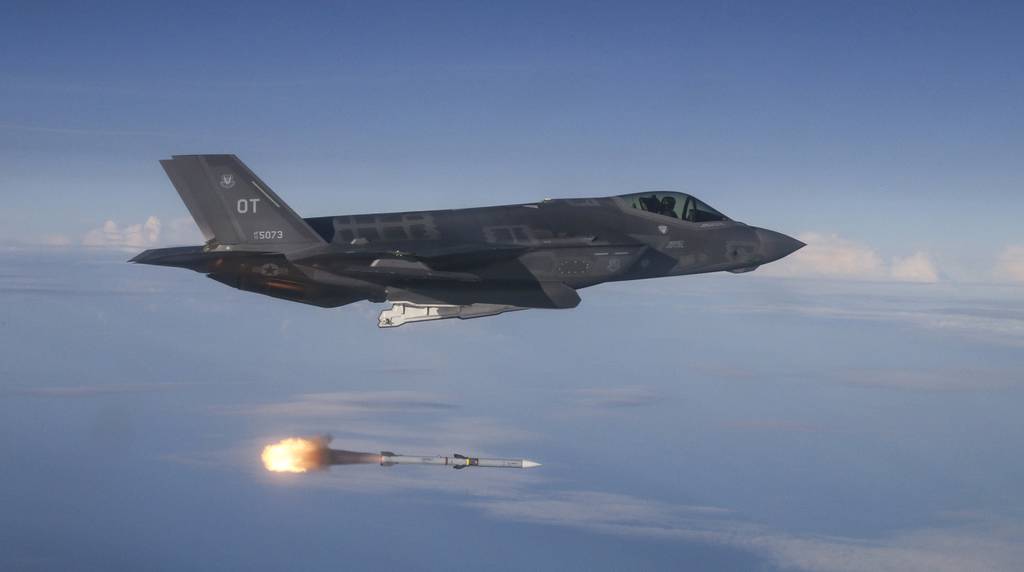WASHINGTON — The Pentagon needs to give the defense industry a more consistent demand signal on how many missiles, munitions and spare parts companies will need to build, Air Force Chief of Staff Gen. CQ Brown said on Wednesday.
Two ways the Pentagon can provide that steadier business include multiyear procurements for weapons and greater use of predictive maintenance, Brown said during a discussion with the Mitchell Institute for Aerospace Studies.
Brown said the military has focused too little keeping a steady flow of munitions production and procurement. “In some cases, because you don’t have a threat on your doorstep, munitions aren’t maybe high on our priority list,” he said.
But with the threat now posed by China and Russia, “that’s different now,” he added.
“This is an area that we’ve got to continue to pay attention to, to ensure that we bring [munitions] along as well,” said Brown, who President Joe Biden last month nominated to be the next chairman of the Joint Chiefs of Staff.
He cited the Korea readiness review, which the military conducted during his tenure as Pacific Air Forces commander, examining what would be necessary to counter a threat from North Korea as an example of the kind of advance munitions planning that must take place. Part of that review, Brown said, was to “look really hard at munitions.”
Brown reiterated the Air Force’s call in its proposed fiscal 2024 budget for multiyear procurements for three key weapons: the Raytheon Technologies-made AIM-120 Advanced Medium Range Air-to-Air Missile, and the Lockheed Martin-made Joint Air-to-Surface Standoff Missile-Extended Range as well as the Long-Range Anti-Ship Missile.
Air Force officials said in March during the budget’s unveiling that the service wanted to use about $1 billion so industry could procure long-lead items for those weapons, as well as other steps that would send a longer-term demand signal to industry. The FY23 National Defense Authorization Act granted the Air Force the authority to make those multiyear purchases.
The Air Force’s proposed FY24 budget would roughly double its overall spending on missiles, from $2.3 billion in FY23 to $4.7 billion.
The Pentagon is also seeking lawmakers’ approval to conduct multiyear buys of Raytheon’s Patriot surface-to-air guided missile system and Lockheed’s Guided Multiple Launch Rocket System, fired from the M142 High Mobility Artillery Rocket System. The U.S. government has provided those weapons to Ukraine as it fights off a Russian invasion.
And if the military wants industry to be able to surge munitions production capacity in an emergency, Brown said, it must make such multiyear buys a regular part of how it does business. That way, industry will have a more reliable demand signal and can keep its production lines flowing.
“I believe that’s just a start,” Brown said, referring to the multiyear buys in the FY24 budget request. “We’ve got to look at multiyear procurements so that it helps give a predictable demand signal to industry. And it’s not just the prime [contractors], it’s all the subs below them so they actually have supply chains laid in, they’re [set up with the proper facilities], they have the workforce, and it’s not a little bit up and down and unpredictability.”
Brown also said it will be important to ensure allies and partners have access to these munitions — and that industry can build enough to keep both them and the United States armed.
“It’s great for them to have the airplanes, but they’ve also got to have the munitions that are capable,” Brown said. “How do we make sure that we have enough munitions on the shelf to support us and our allies and partners? This is something that we need to focus on.”
Brown said the digital engineering of munitions will make it easier to take a more modular approach to building some weapons, similar to the way new aircraft, such as the B-21 Raider, use a modular architecture.
Brown also said the Air Force’s desire to conduct more predictive, conditions-based maintenance on aircraft — where maintainers track how long parts have been on an airplane and try to replace them before they wear out and break — could also help provide a steadier demand signal for industry.
“With data, you know based on the service life of this part how long before it’s going to break,” Brown said. “You don’t wait until it breaks. You’re able to replace it a little bit sooner, which also can help create the demand signal for the supply chain.”
Brown said the Air Force’s Rapid Sustainment Office has been looking closely at ways to use maintenance data to not just decide when maintainers should replace parts, but also to help industry predict how it needs to manage its supply chains.
Stephen Losey is the air warfare reporter for Defense News. He previously covered leadership and personnel issues at Air Force Times, and the Pentagon, special operations and air warfare at Military.com. He has traveled to the Middle East to cover U.S. Air Force operations.








